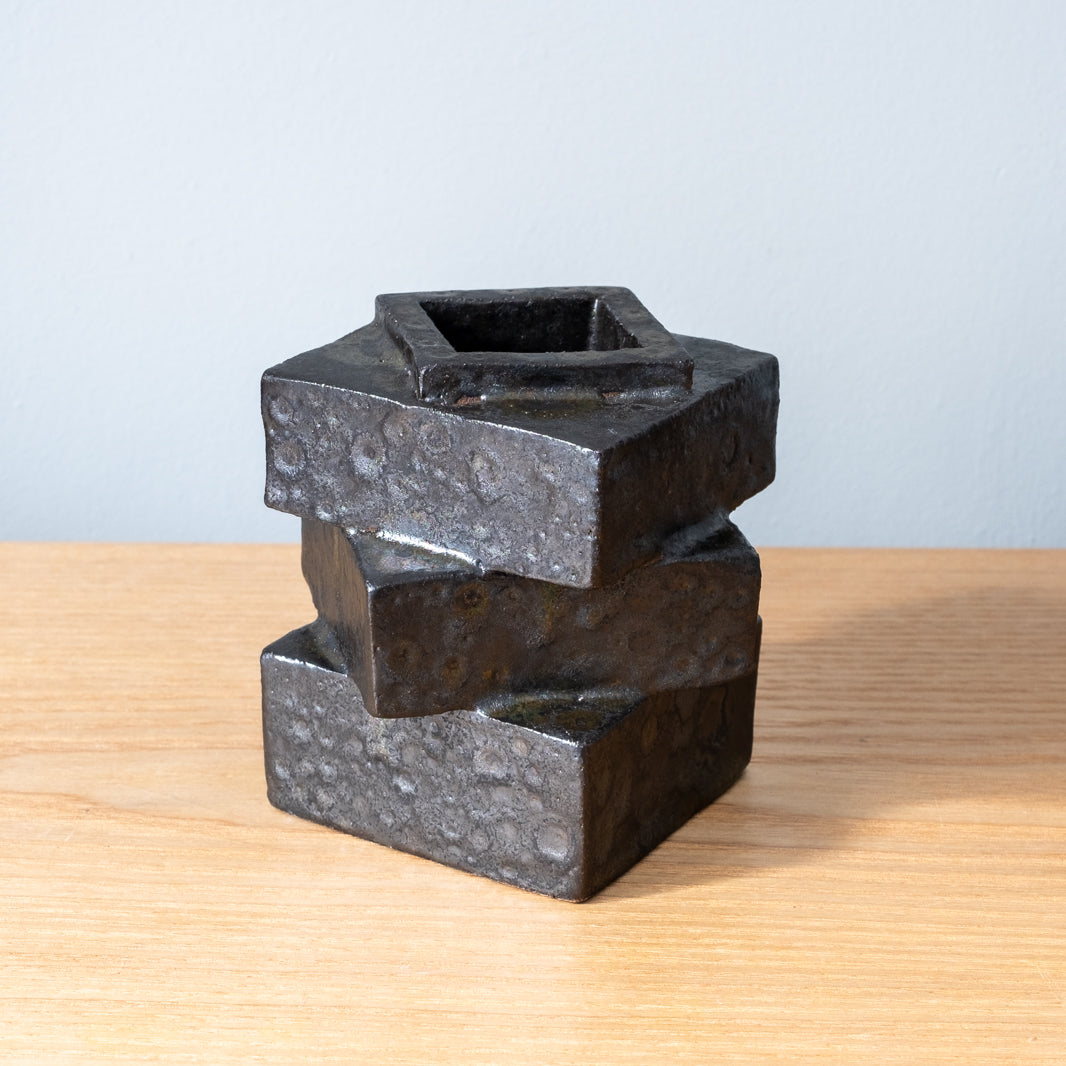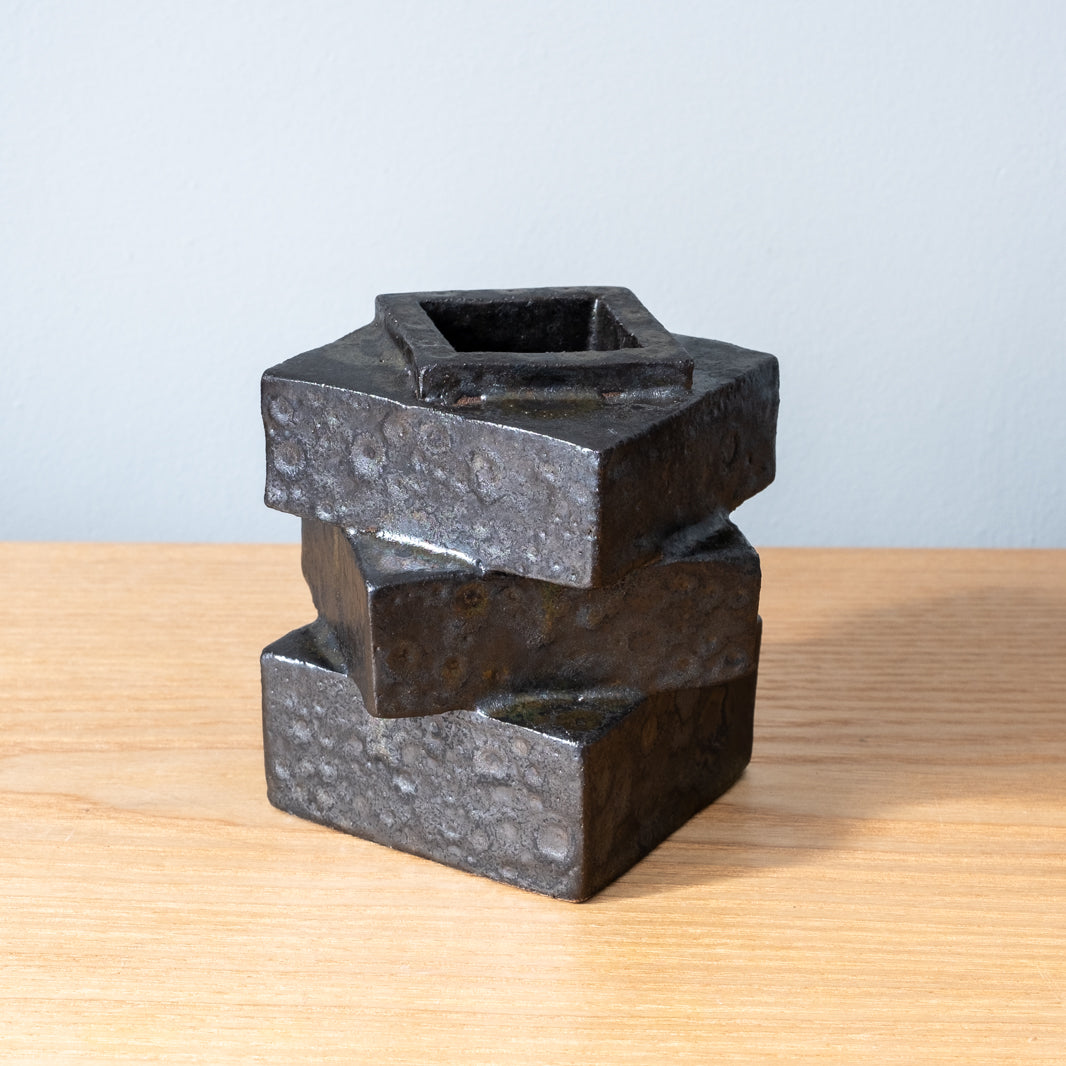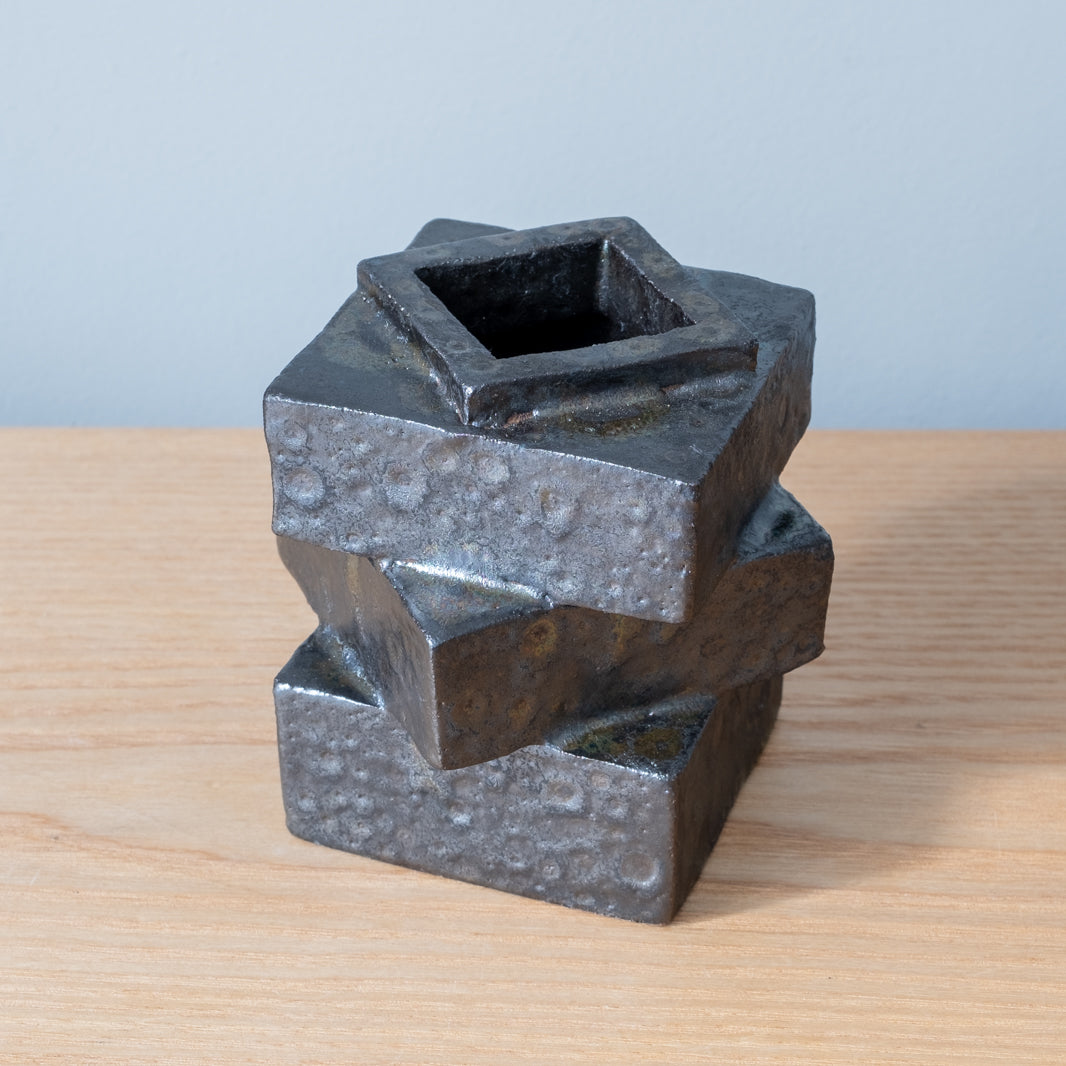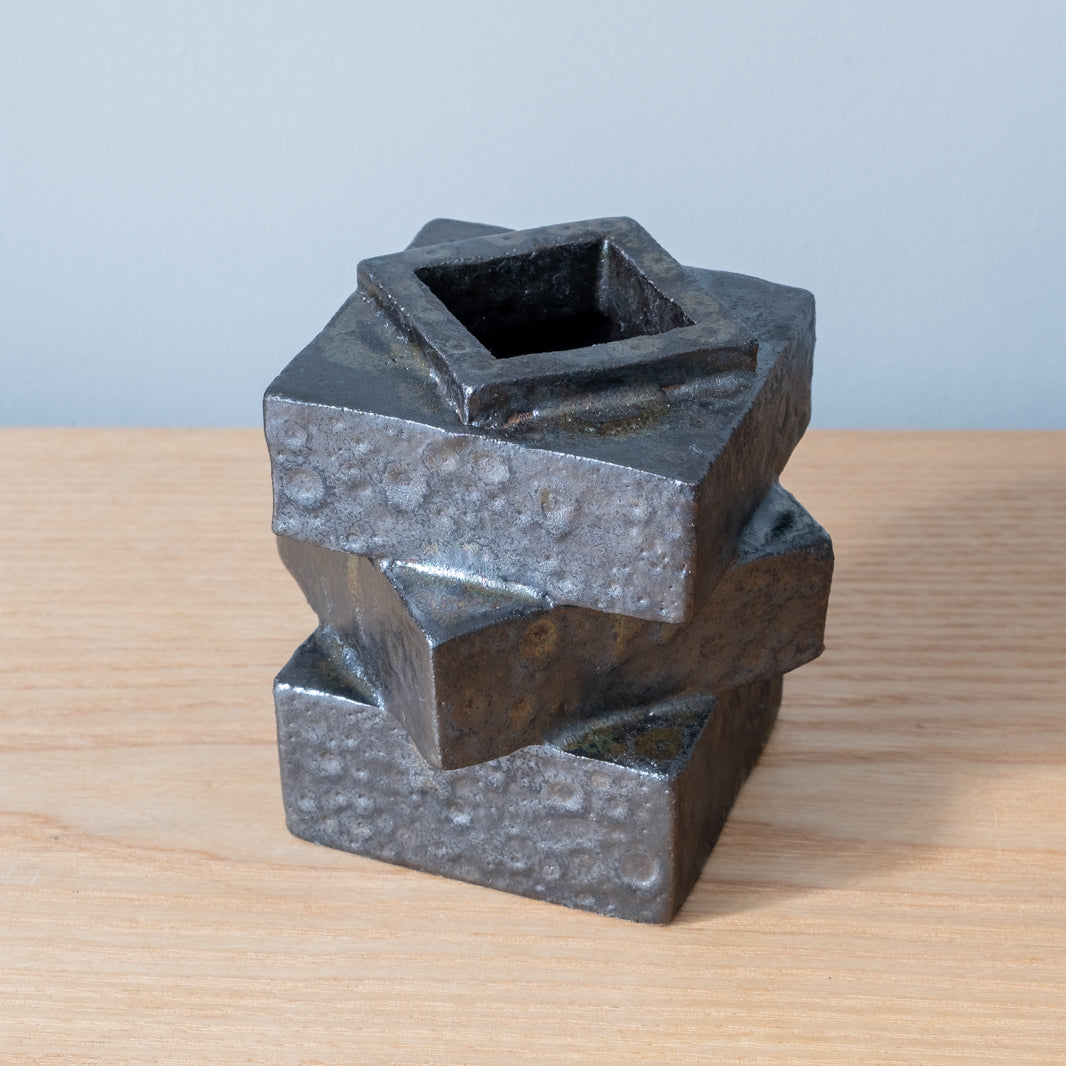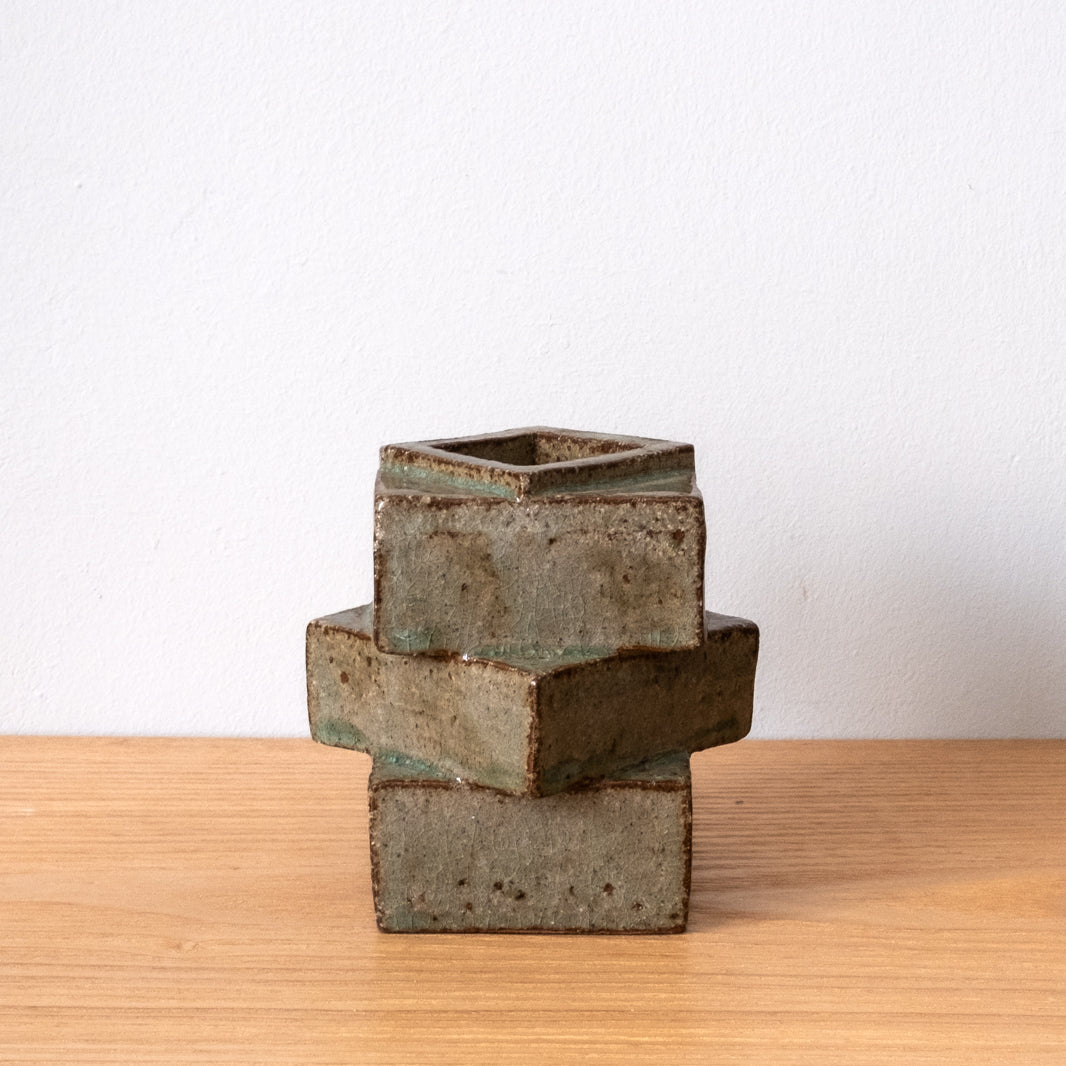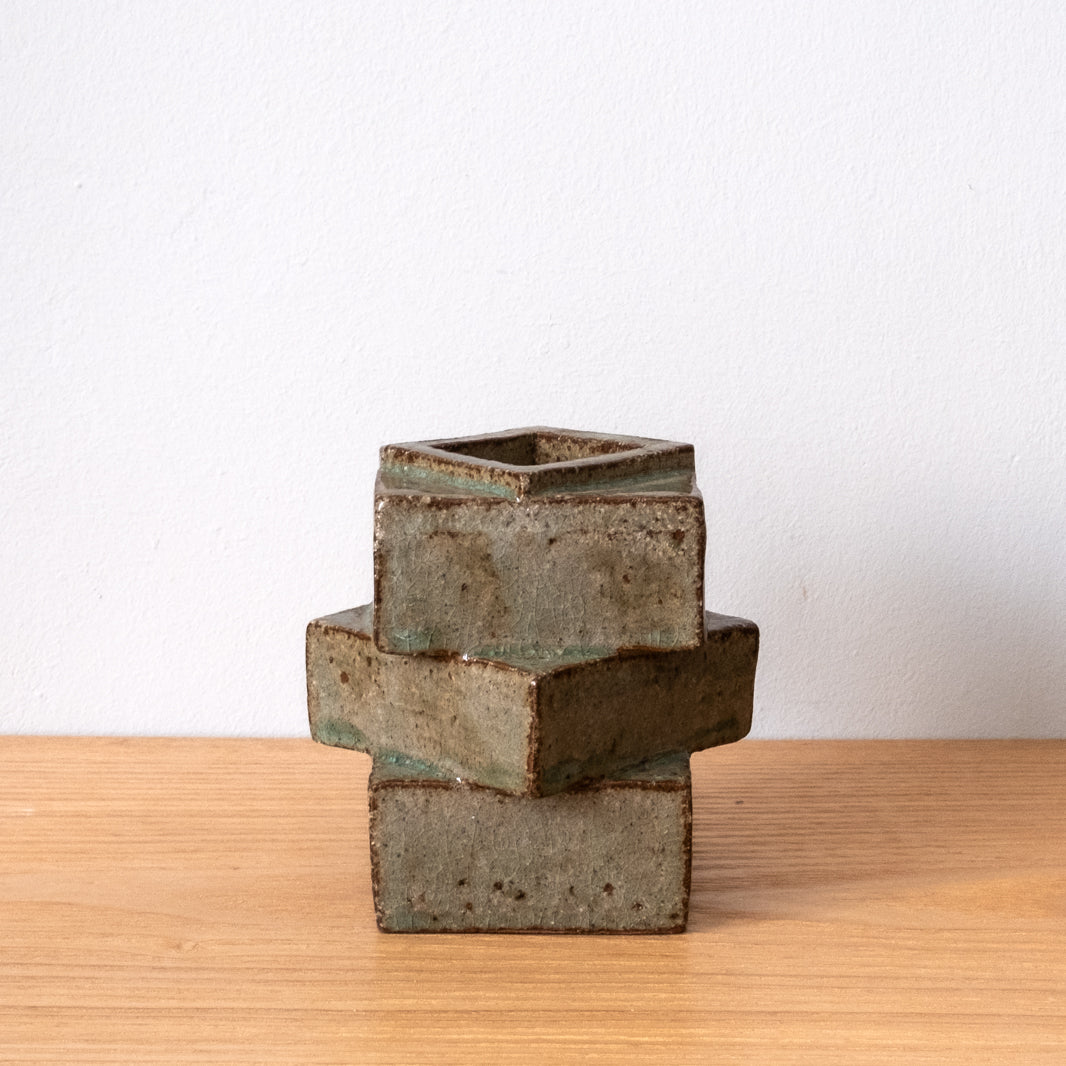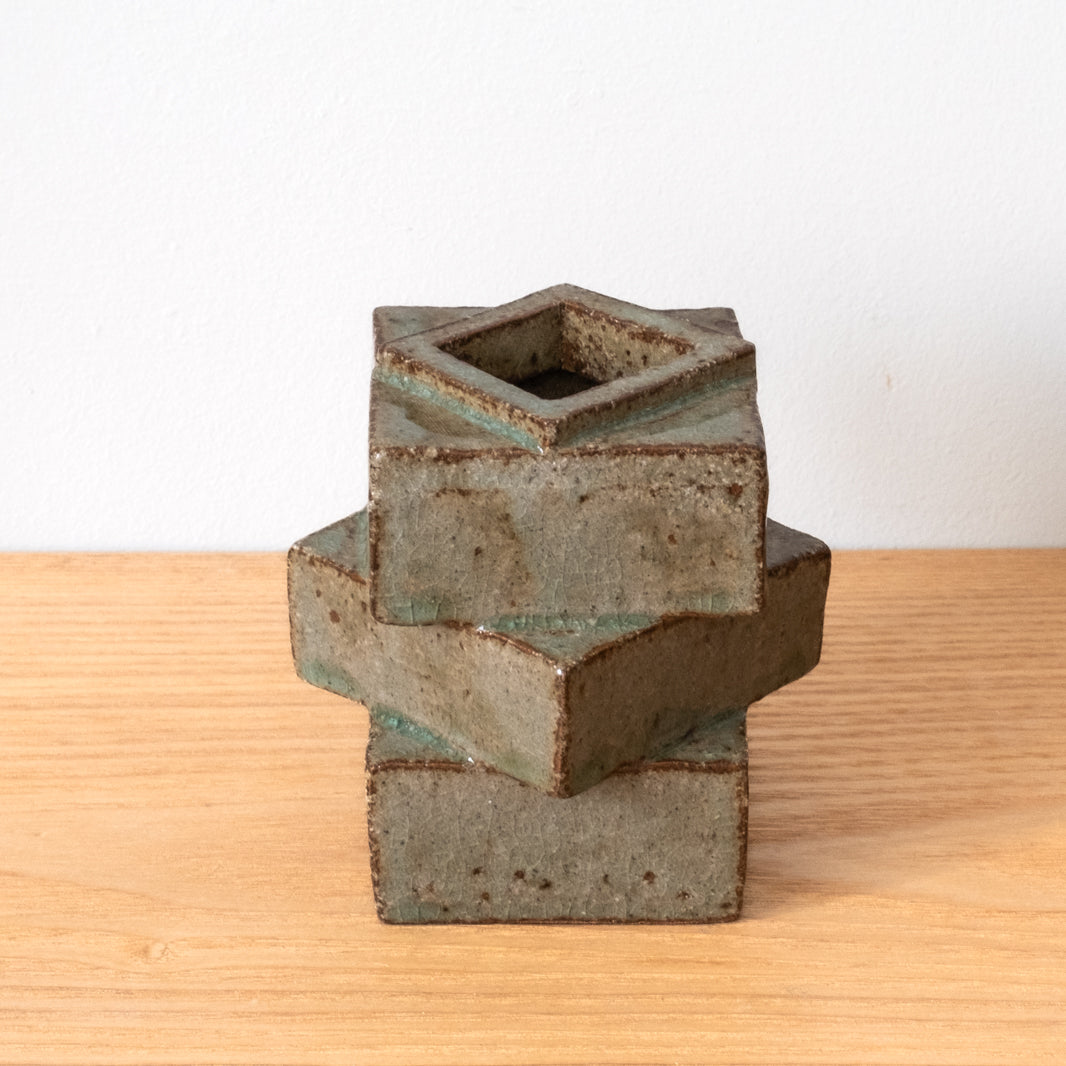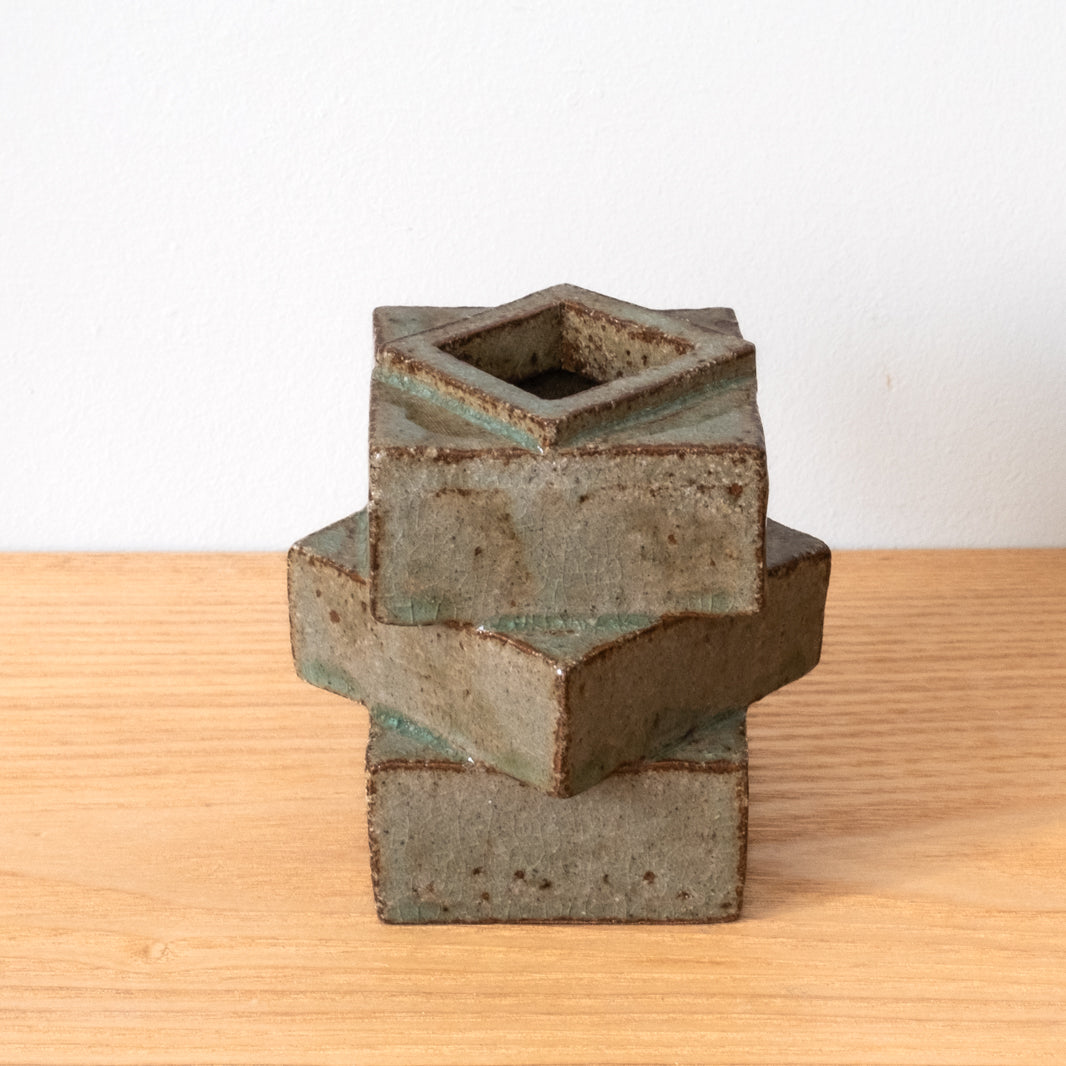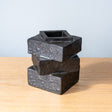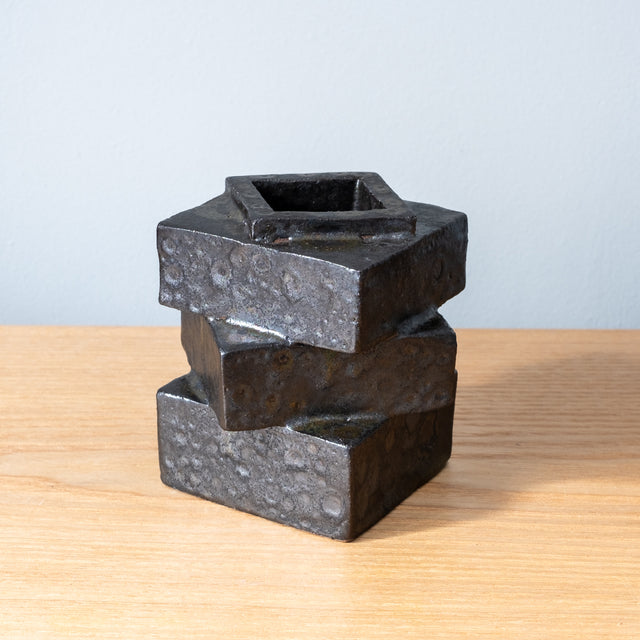Three Box vase
This little vase is characterful and imposing with its broad shoulders and dark glaze. There are hints of turquoise in the irregular and asymmetrical dimples to add some mystery. The iron glaze is extremely versatile and suits any colour foliage or flower.
- 9cm High, 11cm diameter at its widest
- Stoneware (see our Care Guide)
- Hand-thrown, wood-fired noborigama, from the Jugomori Kiln in the village of Hoshino on Kyūshū island
Three Box vase - Iron Glaze is not in stock and will be made for you. This can take up to 5 weeks.
Couldn't load pickup availability
Returns & Refunds
Returns & Refunds
Free returns within the UK
All damage must be reported to us within 14 days of receiving the package
Care Guide
Care Guide
Any additional information will be in our care guide
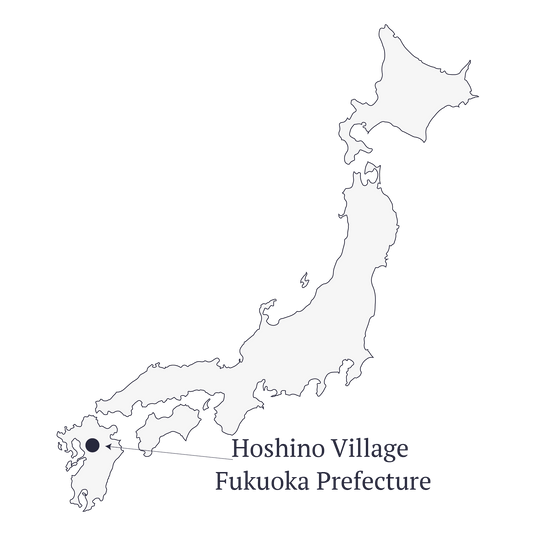
Meet the Maker:

